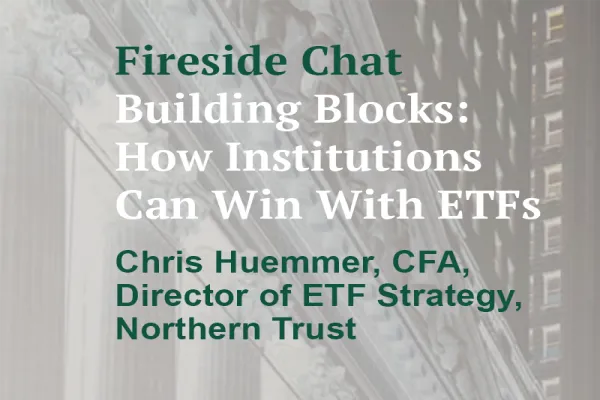U.S. institutions find their relationships with outsourced chief investment officer (OCIO) providers largely beneficial, while also expressing a belief that the OCIO industry cannot rest on its laurels, according to a first-ever survey of asset owners on the topic. Overall, the sentiments expressed by investors in the survey indicate the OCIO industry is at an inflection point where it is expected to experience continued growth combined with significant scrutiny from asset owners. The study, conducted by Cerulli Associates, tapped senior executives, investment professionals, and investment committee and board members at 45 U.S. institutions.
The survey’s findings that 98% of U.S. institutional investors are satisfied with the OCIO model and governance structure provided by OCIOs underpins growth expectations for the OCIO industry. Asset owners say they look to OCIO providers for timelier decision making, deeper manager due diligence, and greater oversight of portfolio risks – and they find it. Cerulli predicts assets under management within the U.S. OCIO industry will grow to nearly $1.7 trillion by 2023 from the current level of $1.1 trillion.
However, asset owners say that they are inclined to use what may be the latter stages of an extended bull market as an opportunity for rigorous review of their OCIO providers – perhaps seizing a window for thorough due diligence before the end of the current cycle. More than half (57%) of organizations say they have initiated or plan to conduct a replacement search or market check of a current OCIO provider, and among organizations that have completed a search, exactly half have replaced their OCIO. Reasons for replacement include a desire for greater flexibility, stronger investment capabilities, better performance, broadened asset class coverage, proactive client service, and better fit with the OCIO.
“The ability of OCIOs to deliver on investment objectives across the full range of asset classes and investment styles is obviously paramount,” says Sarah Melvin, Head of Institutional Client Business, U.S. & Canada, BlackRock. “But the OCIO relationship is about so much more than the ‘I.’ Asset-owners need to find OCIOs with expertise in helping them achieve their specific organizational objectives, and they really value the thought partnership that OCIOs can provide. At the end of the day, the OCIO should feel like an extension of their staff.”
Market downturn would test OCIOs
Growth of the OCIO industry has occurred in conjunction with an extended bull market, but the length of that run has investors adapting a cautious stance regarding the next market downturn.
That caution is a double-edged sword for OCIO providers: Cerulli believes that market turbulence will fuel continued growth as more institutions are likely to seek the help of providers when returns become harder to generate. At the same time, a downturn will also present new performance challenges for providers. Nevertheless, 89% of institutions believe their OCIO provider is well positioned to meet their performance goals and objectives over the next 3-5 years. However, 11% of all institutions and 16% of defined benefit plans are unsure whether their OCIO will meet their performance goals over that same time period.
“Fears about performance in a down market aren’t unique to OCIO relationships,” says Melvin. “Clients across the board are concerned about meeting their objectives in a more challenging environment. That said, I think some of the key things to look for in an OCIO that can really help its clients in a down market are robust risk management skills and the ability to respond tactically to changing market conditions.”
A challenging market would likely spur a greater desire for investment board members to feel engaged in the investment process, and the Cerulli survey dispels a common misperception that an OCIO would hinder such engagement. More than half of institutions (56%) say that board engagement has not changed since the establishment of an OCIO relationship, and 27% indicate that board engagement has improved.
“The survey has dispelled the myth that board members are less engaged when an institution decides to outsource,” Melvin says. “The percentage of institutions reporting an increase in board engagement is much higher than the percentage reporting a decrease. But most importantly, a significant majority of institutions that have collaborated with an OCIO provider say that doing so has given boards and committees more time to focus on priorities that are core to their organization.”
Analysis relies on data from interviews, company reports, databases, periodicals, and other sources deemed to be reliable. Although believed to be accurate, this information is not guaranteed and may be incomplete.
This study was sponsored by BlackRock. BlackRock is not affiliated with Cerulli Associates or any of its affiliates.
This material is provided for educational purposes only and is not intended to be relied upon as a forecast, research or investment advice, and is not a recommendation, offer or solicitation to buy or sell any securities or to adopt any investment strategy. The opinions expressed are subject to change.
References to specific securities, asset classes and financial markets are for illustrative purposes only and are not intended to be and should not be interpreted as recommendations. Reliance upon information in this material is at the sole risk and discretion of the reader. The material was prepared without regard to specific objectives, financial situation or needs of any investor.
This material may contain “forward-looking” information that is not purely historical in nature. Such information may include, among other things, projections, forecasts, and estimates of yields or returns. No representation is made that any performance presented will be achieved by any BlackRock Funds, or that every assumption made in achieving, calculating or presenting either the forward-looking information or any historical performance information herein has been considered or stated in preparing this material. Any changes to assumptions that may have been made in preparing this material could have a material impact on the investment returns that are presented herein. Past performance is not a reliable indicator of current or future results and should not be the sole factor of consideration when selecting a product or strategy.
The information and opinions contained in this material are derived from proprietary and nonproprietary sources deemed by BlackRock to be reliable, are not necessarily all inclusive and are not guaranteed as to accuracy.
In the U.S., this material is for Institutional use only – not for public distribution.
In Canada, this material is intended for permitted clients only, is for educational purposes only, does not constitute investment advice and should not be construed as a solicitation or offering of units of any fund or other security in any jurisdiction.
MKTGH0319U-785365






